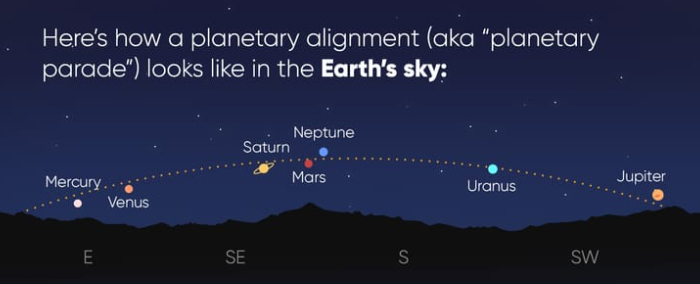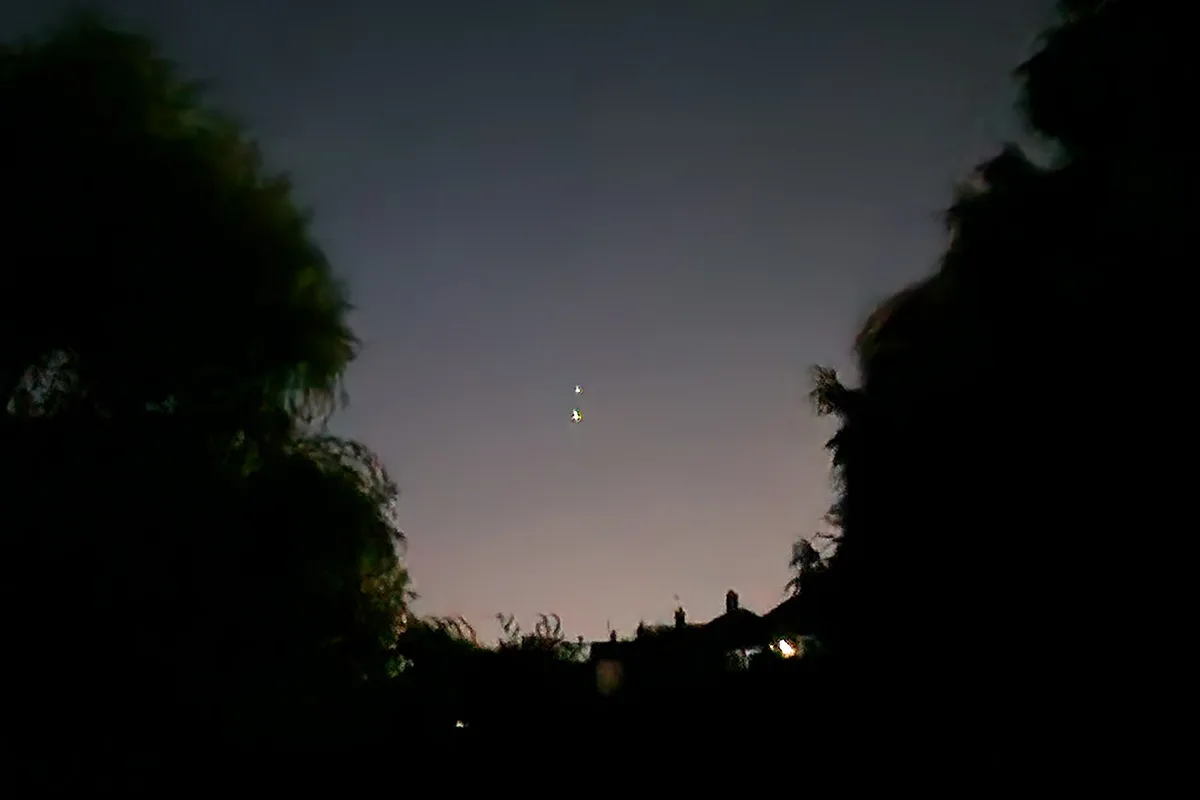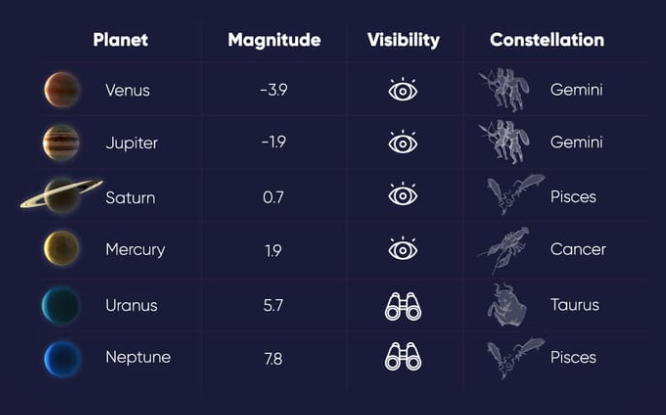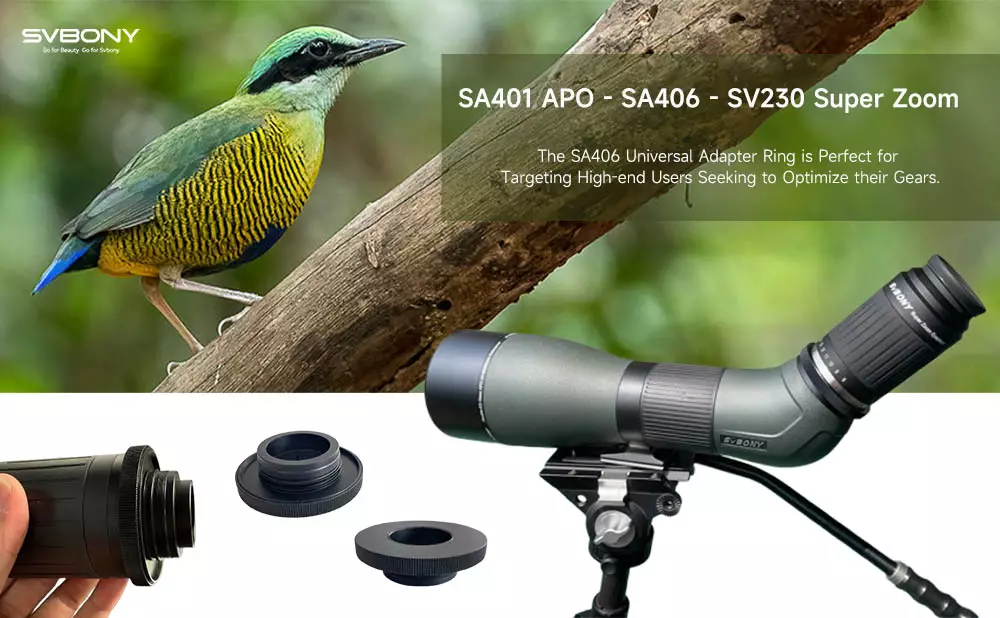Planet Alignment 2025: Everything You Need to Know

Planet Alignment 2025: Everything You Need to Know
In August this year, a spectacular show will take place - the planetary alignment. From Mercury's "disappearance" at the beginning of the month, to the romantic conjunction of Venus and Jupiter in the middle of the month, to the warm companionship of the stars and the moon at the end of the month, the entire August sky will be particularly spectacular thanks to this "planetary extravaganza".
Scientific Explanation of Planetary Conjunctions
The Difference Between "Planetary alignment" and "Planet parade"
The planetary alignment, which is not the planets actually lining up in a straight line in space, is not the same as the "Planet Parade" that we often hear about. There are also clear differences:
Planetary Alignment: Refers to multiple planets clustered on the same side of the Sun at the same time (from the Solar System Top View perspective), or concentrated within a very small sky zone from the Earth's perspective (the smaller the sky zone angle, the more visually "compact" and the higher the spectacle level). Since the planetary orbits are not perfectly coplanar (there are tiny inclinations), even a "full planetary streak" is only a "close gathering" rather than an absolutely straight alignment in three dimensions.
Planet Parade: In more common parlance, this refers to the simultaneous appearance of multiple planets in the sky in a single night; in astrology, it also refers specifically to multiple planets in the same zodiacal sign. The August 2025 phenomenon is both a "6-planet alignment" (with a sky angle of about 134°-164°, depending on the region) and a “planetary parade” in the popular definition of the term.


Essentially, the planetary alignment is the result of planets with different rotation periods (e.g., Mercury rotates in 88 days, Neptune in 165 years) "coming together" on the same side of the Sun at a particular moment in time.
Types of planetary alignment
According to the number of participating planets, planetary alignment can be categorized into different levels, allowing us to judge the rarity of the spectacle more clearly:
- Mini-Connections: 3 planets involved, more common, may occur almost every month;
Small Connection: 4 planets involved, once every 1-2 months, suitable for beginners;
Large Connection: 5-6 planets involved (e.g., the 6-planet conjunction in August 2025), on average, once every 10-20 years, highly ornamental;
Complete Connection: all planets in the solar system (including Pluto) involved, very rare - only 7 full conjunctions in the current millennium. Complete conjunction: all planets of the Solar System (including Pluto) participate, very rare - only 7 times in the current millennium that all planets have gathered in the 90° zone, and the next time will not be until 2161.
August planetary alignment
This August's planetary alignment will feature six planets - Mercury, Venus, Jupiter, Saturn, Uranus and Neptune. Each of these planets has a unique charm and a significant difference in brightness (the smaller the magnitude value, the brighter it is):
- Mercury (+1.2 magnitude - +1.9 magnitude): the closest planet to the Sun, secretive in its movements, appearing only briefly before and after sunrise, with its brightness varying with its position;
Venus (-3.9 magnitude): the brightest planet in the Solar System, known as the "Star of the Beginning", easily recognizable even in the morning light;
Jupiter (-1.9 magnitude): the Solar System "giant", its surface stripes and four Galilean satellites can be seen with a small telescope;
Saturn (+0.7 magnitude): comes with a "romantic halo", yellowish light is highly recognizable, and it is a "classic look" for astronomical observation Watching point";
Uranus (+5.7 magnitude): theoretically visible to the naked eye, but requires an extremely dark environment, easier to observe with binoculars, light blue color;
Neptune (+7.8 magnitude): the most distant planet, which has to be located with the help of binoculars or small telescopes, together with the Star Chart APP.
Observation Guidelines
Best Time to Observe - August Timeline
Unlike a single, short-lived astronomical phenomenon, the planetary conjunction in August 2025 will continue throughout the month, with different highlights at different times:
1.Early August (1 - 10 days): Alignment "warm-up period", Venus with deep sky
At the beginning of the month, Mercury ushered in the "lower conjunction" on August 1 - at this time it is located between the Earth and the Sun, completely covered by the sun's light, difficult to be observed, is considered to be the "party of planets" of the "latecomers".
August 2 - 3: Venus has already "arrived" in advance: after crossing the head of Taurus in July, it continues to move towards the foot of Gemini at the beginning of August, and from August 2 to 3 it will make a close approach to deep sky objects such as the M35 Shoe Buckle Cluster, the Monkey Head Nebula, etc. If the weather is clear, observers will be able to see the planet from a distance. If the weather is clear, observers can use small telescopes to try to capture the rare image of "Venus and Deep Sky Objects in the Same Frame", with bright Venus (-3.9 magnitude) contrasting with hazy nebulae and star clusters, making it very enjoyable to watch.
From August 8, the "energy" of the six-star alignment began to converge, and the planets gradually concentrated their positions.
In the early morning of August 10, the spectacle will finally take shape - about one hour before sunrise is the best time to observe, when the sky is moderately bright, and the planets' light is clear and not obscured by the sun's glare. Specifically:
Mercury (+1.5 magnitude) hangs low on the Cancer horizon in the east, low and not very bright, so you'll need to look carefully in an open, unobstructed view;
Venus (-3.9 magnitude) and Jupiter (-1.9 magnitude) are already firmly positioned in the constellation of Gemini, and both are so bright that they're easily seen even in the outskirts of the city, and they're approaching each other at a rate visible to the eye;
Uranus (+5.7 magnitude) is hidden in the constellation of Taurus, where it's a star of the heavens. Uranus (+5.7 magnitude) is hidden in Taurus and requires binoculars to "pull out";
Saturn (+0.7 magnitude) and Neptune (+7.8 magnitude) are stationed in Pisces, with Saturn being highly recognizable, and Neptune requiring specialized equipment to locate it on a star chart.
2. Mid-August (11th - 20th): The "climax" of alignment, the Venus-Jupiter conjunction and meteor showers.
In the morning of August 11, the "planetary event" continues to heat up, the best observation time is still 1 hour before sunrise, Mercury (+1.2 magnitude, brightness increased), Jupiter, Venus, Uranus, Neptune and Saturn are still in the pre-dawn sky "competition", Mercury is slightly elevated, the difficulty of observation is reduced. Mercury's position is slightly elevated, making it less difficult to observe.
By August 12, this streak ushered in the first "highlights" - Jupiter and Venus ushered in the year's closest moment, less than 1 degree apart from each other (equal to the diameter of 2 full moons). The best viewing window is from 1.5 hours to 30 minutes before sunrise, when the sky is darker and the details of the two bright stars can be seen more clearly: Venus (magnitude -3.9) and Jupiter (magnitude -1.9) are like "double diamonds" set in the sky, so that they can be covered at the same time by a straightened arm and a pinky finger. What's even more surprising is that on the 12th, the Perseid Meteor Shower will be at its peak, so after enjoying the shower early in the morning, you can also encounter the meteors after nightfall, making it a day of "contracting" for the two wonders.
Venus and Jupiter between the trees

13 - 14 days, Jupiter gradually "beyond" Venus, moving from the west side of Venus to the east side, the best observation time adjusted to 40 minutes before sunrise to 10 minutes before sunrise (Mercury position is higher, not easy to be blocked).

Early in the morning of 17 - 18 days, a crescent moon joins the "planetary camp", 30 minutes before sunrise to 5 minutes before sunrise is the best time to photograph the "double stars with the moon", soft moonlight will not cover the planetary light, and you can use your cell phone to take a clear picture.
On 19 - 20 days (August 19 is the full moon), the moon's brightness increases, it is recommended to start observing 1.5 hours before sunrise to avoid the interference of the full moon's bright light, when the six planets are still completely visible, it is the last good opportunity to photograph the "Planets in a row".
3. Late August (21st - 31st): the "closing period" of the alignment, with the planets gradually dispersing
After August 21, Mercury (brightness reduced to magnitude +1.8) gradually approaches the Sun, with a brief window of observation only 20 minutes before sunrise, when it is barely visible with binoculars.
After the 25th day, Mercury disappears completely into the sun's light. The best time to observe Venus (-3.9 magnitude), Jupiter (-1.9 magnitude), Saturn (+0.7 magnitude), Uranus (+5.7 magnitude) and Neptune (+7.8 magnitude) is still 1 hour before sunrise. Saturn's elevated position in Pisces provides a better observation angle, and the details of the halo can be seen more clearly with a telescope; Uranus and Neptune need to be observed after the full moon (from August 25th onwards), when the darkness of the sky returns for better observation.
Precautions for Observation
1. Strictly prohibit looking directly at the sun: when observing before sunrise, it is necessary to strictly control the time - after the sun has risen (to the extent that the edge of the sun can be seen with the naked eye), immediately stop observing, and never look directly at the sun with the naked eye, binoculars, or telescopes that have not been fitted with solar filters.
2. Avoid light pollution and obstructions: light pollution in urban centers and areas with dense street lights will cover faint planets such as Uranus and Neptune, and it is recommended to choose areas with light pollution level ≤3 (you can check through the "Light Pollution Map" APP). At the same time, make sure that there are no tall buildings, trees or mountains in the east and south of the observation point, especially when observing Mercury and Venus, the altitude angle of the two is ≤10°, and tiny obstructions will lead to observation failure.
3. Learn to distinguish between planets and stars: novice easy to mistake bright stars for planets, can be judged by three points:
- ① brightness and blinking: the planet's brightness is stable and does not blink, stars due to atmospheric perturbations will be "winking";
- ② position change: the planet moves along the ecliptic (different seasons in different constellations), the relative position of the star is fixed;
- ③ color: Saturn is yellowish , Venus is silver-white, stars are mostly white or blue (such as the blue stars of the Pleiades).
4. Recommended observation tools
Naked eye: suitable for observing the three bright planets Venus (-3.9 magnitude), Jupiter (-1.9 magnitude), Saturn (+0.7 magnitude), and Mercury (+1.2 magnitude) can be barely seen in an environment with less light pollution, which is suitable for novices to have "zero threshold" experience.

Binoculars: An essential tool! They help you quickly locate Uranus (+5.7 magnitude) and allow you to see the outline of Saturn's halo and Jupiter's four Galilean moons more clearly.
Small astronomical telescope: If you want to explore further, you can choose a refracting telescope with an aperture of around 80 mm, which will allow you to clearly see the stripes on Jupiter's surface, the gaps in Saturn's rings, and even the pale blue disk of Uranus. Neptune (+7.8 magnitude) will change from a "star point" to a clear small disk.
- Starwalk 2 APP: Easy to use, it's a "star-finding tool":
- ① Open the app, go to the "Planets" section in the menu, and click on the "Planet Walk" feature;
② The bottom of the screen displays icons for planets, the sun, and the moon. Gray icons indicate that the planet is below the horizon. Click on the corresponding planet to locate it on the star chart;
③ Aim your phone at the sky to align the screen's star chart with the real sky, or enable the AR mode by tapping the camera icon in the top-right corner. The star chart will overlay the live view, and you can follow the white arrow to locate the target planet; - ④ Enter the "Best Stargazing Nights" section to view the rise and set times, brightness, and night duration of local planets. You can also use animated simulations to track planetary movements and precisely select the optimal observation period.
Other aids: Carry a red light flashlight (to avoid bright light affecting night vision, which will take 20-30 minutes to recover after being destroyed). If you want to take photos, you can prepare a simple cell phone holder (connected to the telescope) to easily capture the details of the planets.
Linkages with other astronomical phenomena
In addition to the "fantastic linkage" with the Perseid meteor shower, the interaction of the full moon with the planets during this August planetary streak is also noteworthy: around August 10, the nearly full moon (full moon on August 19) will appear below Saturn in Pisces, near the horizon (in the direction of Aquarius), and will be almost completely illuminated to the naked eye, even appearing larger than usual due to the It is almost completely illuminated to the naked eye, and even appears larger than usual due to the "Moon Illusion". Although its brightness will cover the faint light of Neptune (+7.8 magnitude), the combination of the full moon with Saturn (+0.7 magnitude) and Neptune makes the observation image more layered - the yellowish Saturn, the hazy full moon and the distant stars echo each other. Saturn, the hazy full moon, and the stars in the distance.
In addition, around August 25, Saturn will reach the best observation period after the "Sunrise", when Saturn is closer to the Earth (about 1.35 billion kilometers), with a high brightness (+0.7 magnitude), and is visible throughout the night, so that after observing the planetary streak in the early morning, you can continue to observe the details of Saturn's halo in the night.
Six Planet Alignment are uncommon, occurring on average only once every 10-20 years. The last six planet alignment of similar magnitude occurred in May 2011, when Mercury, Venus, Jupiter, Mars, Saturn and Uranus appeared in the sky at the same time. And while there was a "Seven Planet Alignment" (including Mars) in January-February 2025, this August alignment is even more impressive due to the "Venus-Jupiter conjunction (only 0°52′ apart on August 12)" and the "meteor shower superposition", the viewing is more characteristic. Each occurrence of the planetary streak provides astronomers with excellent observation opportunities to study planetary orbits and rotation cycles, and allows the general public to experience the laws and magic of the universe.
When is the next planetary alignment?
What's even more exciting is that this alignment is not "alone" and there are several more planetary alignment to watch out for in the coming years:
- February 28, 2026: 6-planet streak (Mercury, Venus, Neptune, Saturn, Uranus, Jupiter) in the evening hours, no need to get up early, more suitable for family observation;
August 12, 2026: 6-planet streak in the early morning hours (including Mars, to make up for the absence of Mars in August 2025);
Long-range highlights: September 8, 2040 (5 visible planets + crescent moon), 2080 March 15 (Saturn-Jupiter "grand conjunction" + 6 planetary conjunctions).
If you miss the August 2025 observation, the next 6-planet early morning conjunction will have to wait until August 2026, and the 2025 "Venus-Jupiter conjunction (only 0°52′ apart on August 12)" is a rare detail of the year, so it is recommended to prioritize this opportunity.
In August 2025, let's go to this "planetary date" together!








